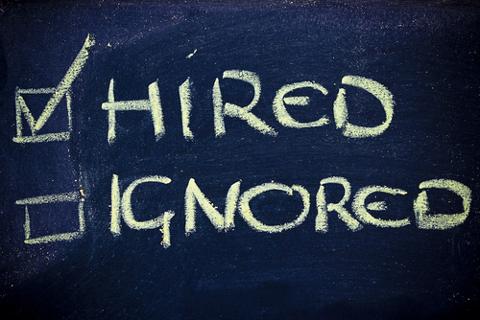
In just a few hours, often without meeting you in person, a professional résumé writer can create a document that defines who you are, what sets you apart, and how you plan to deliver value to potential employers. How do they pull that sort of thing off? Easy: They have developed a relatively simple but effective formula for eliciting the right details about education, skills and work experience from tech pros and turning it all into impressive dossiers that increase the chances of landing an interview. In the spirit of saving you hours of frustration, two professional résumé writers have graciously agreed to share some of their trade secrets with you.
Jot Down Your Accomplishments First
Your achievements serve as the foundation for your brand, your résumé’s narrative, and your
personal value proposition – which conveys why you’re the right person for the job. It’s easy to start writing a résumé and end up jotting down a huge list of tasks and responsibilities; instead, concentrate on a list of “primary” achievements for each position. “I use a tech pro’s accomplishments and project descriptions to develop a theme for their résumé,” noted Wendy Enelow a master résumé writer and co-author of
“Modernize Your Résumé.” “Focus first on the results of your work and the impact of projects — not your duties, and don’t start writing your résumé until you’ve identified what makes you qualified, unique and distinctive,” she added.
Identify Targets
Speaking in the language of tech managers, HR recruiters and
applicant tracking systems is one of the most important and challenging tasks that all résumé writers face. To make sure that your résumé appeals to multiple reviewers, review several job postings for the type of positions and companies you want to work for. Next, use the job postings as a reference to identify and align your
action verbs, job titles, accomplishments, skills and keywords to the position you want, said Maryann Riggs, a certified professional résumé writer and president of About Jobs: “Write to your goals.” For example, if you’re looking to move into a management role, don’t say that you implemented a solution; say that you drove implementation. If you want to move into consulting, talk about what you did for clients in your previous position. If managing budgets and schedules is a top requirement for a job you want, work those examples into your résumé. And be sure to use your target company’s job titles—for instance, don’t say “desktop manager” if your target company uses “manager of desktop support.” This step will also help you decide what information is relevant and what is not. Again, you should be brainstorming and figuring out what you want to say and the data you want to include. Professional résumé writers get their ideas in order before they create their first draft.
Write from the Bottom Up
Once you’ve developed a theme and gathered up documentation, make the writing process easier by installing the “backbone” of your résumé. Start at the bottom of the document and work your way up. A bottom-up writing approach ensures that the body of your résumé supports the all-important opening summary or profile section. “List the factual data first,” Enelow advised. “Put in your education, technical skills and awards, then enter your job titles, dates, company names and any descriptions into your work history, and instantly, the outline is there.” Riggs also likes to enter sub-section headings under each position in a professional’s work history. Clustering accomplishments under sub-headings, such as transformational leadership or business process automation, helps with organization, makes a résumé easier to read, and supports the branding process. Be disciplined as you fill in the blanks in your work history and project experience sections, sticking with brief examples of achievements that match the position’s key requirements, core skills and your value proposition. If you feel compelled to add more, create an addendum and bring it to the interview.
Create the Opening Profile and Line Edits
Now you’re ready to craft a headline and either a paragraph-style or bullet-style opening section that explains why you are uniquely qualified and the best person for the job. Edit, read, and then edit some more as you fine-tune adjectives, verbs, keywords and text. Professional résumé writers manage to get their point across in about two pages. “Use as few words as possible,” Riggs said. “You can expand on your accomplishments and skills once you get to the interview.”
 In just a few hours, often without meeting you in person, a professional résumé writer can create a document that defines who you are, what sets you apart, and how you plan to deliver value to potential employers. How do they pull that sort of thing off? Easy: They have developed a relatively simple but effective formula for eliciting the right details about education, skills and work experience from tech pros and turning it all into impressive dossiers that increase the chances of landing an interview. In the spirit of saving you hours of frustration, two professional résumé writers have graciously agreed to share some of their trade secrets with you.
In just a few hours, often without meeting you in person, a professional résumé writer can create a document that defines who you are, what sets you apart, and how you plan to deliver value to potential employers. How do they pull that sort of thing off? Easy: They have developed a relatively simple but effective formula for eliciting the right details about education, skills and work experience from tech pros and turning it all into impressive dossiers that increase the chances of landing an interview. In the spirit of saving you hours of frustration, two professional résumé writers have graciously agreed to share some of their trade secrets with you.
 In just a few hours, often without meeting you in person, a professional résumé writer can create a document that defines who you are, what sets you apart, and how you plan to deliver value to potential employers. How do they pull that sort of thing off? Easy: They have developed a relatively simple but effective formula for eliciting the right details about education, skills and work experience from tech pros and turning it all into impressive dossiers that increase the chances of landing an interview. In the spirit of saving you hours of frustration, two professional résumé writers have graciously agreed to share some of their trade secrets with you.
In just a few hours, often without meeting you in person, a professional résumé writer can create a document that defines who you are, what sets you apart, and how you plan to deliver value to potential employers. How do they pull that sort of thing off? Easy: They have developed a relatively simple but effective formula for eliciting the right details about education, skills and work experience from tech pros and turning it all into impressive dossiers that increase the chances of landing an interview. In the spirit of saving you hours of frustration, two professional résumé writers have graciously agreed to share some of their trade secrets with you.

